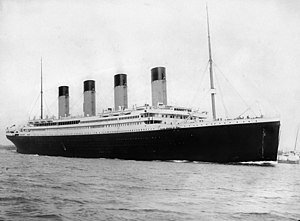1912: Titanic’s Maiden Voyage
On the 10th of April 1912, the RMS Titanic, the largest passenger liner of its time, embarked on its maiden voyage from Southampton, England, to New York City. This grand vessel was a marvel of luxury and technological advancements, capturing the attention and admiration of people around the world.
The Titanic was built by the renowned shipbuilding company, Harland and Wolff, and was owned by the White Star Line. It was designed to be the epitome of elegance and comfort, with its opulent interiors and state-of-the-art facilities. The ship boasted amenities such as a swimming pool, a gymnasium, and even a squash court, providing unparalleled luxury to its passengers.
As the Titanic set sail on that fateful day, it carried with it the dreams and aspirations of its passengers. Among them were wealthy businessmen, eager to make their mark in the New World, and immigrants seeking a better life. The ship was a melting pot of different social classes, with first-class passengers enjoying the finest accommodations and services, while those in third class had more modest accommodations but were still excited about the opportunities that awaited them.
However, the Titanic’s journey would be cut short by an unforeseen tragedy. On the night of the 14th of April, the ship struck an iceberg in the frigid waters of the North Atlantic. The impact caused irreparable damage to the hull, leading to the gradual sinking of the ship. Despite the efforts of the crew and the deployment of lifeboats, the disaster claimed the lives of more than 1,500 people.
The sinking of the Titanic sent shockwaves across the world and sparked widespread grief and outrage. It exposed the shortcomings in maritime safety regulations and led to significant changes in the way ships were built and operated. The tragedy also highlighted the stark contrast between the extravagant lifestyles of the wealthy and the harsh realities faced by those in lower social classes.
Over the years, numerous investigations and studies have been conducted to understand the events leading up to the Titanic’s sinking. The wreckage of the ship was discovered in 1985, providing valuable insights into the structural failures that contributed to its demise. The artifacts recovered from the wreckage serve as a haunting reminder of the lives lost and the stories that were forever silenced.
The sinking of the Titanic has become a symbol of human hubris and the fragility of even the most celebrated technological achievements. It serves as a reminder that no matter how advanced our creations may be, they are ultimately subject to the forces of nature.
Today, the Titanic continues to captivate the imagination of people worldwide. Museums dedicated to the ship and its passengers have been established, allowing visitors to learn about the events of that fateful night and pay tribute to the lives lost. The story of the Titanic has been immortalized in books, movies, and documentaries, ensuring that the memory of this tragedy will endure for generations to come.
As we reflect on the events of that ill-fated voyage in 1912, let us remember the lives that were lost and the lessons that were learned. The sinking of the Titanic serves as a stark reminder of our own vulnerability and the importance of humility in the face of nature’s power.

